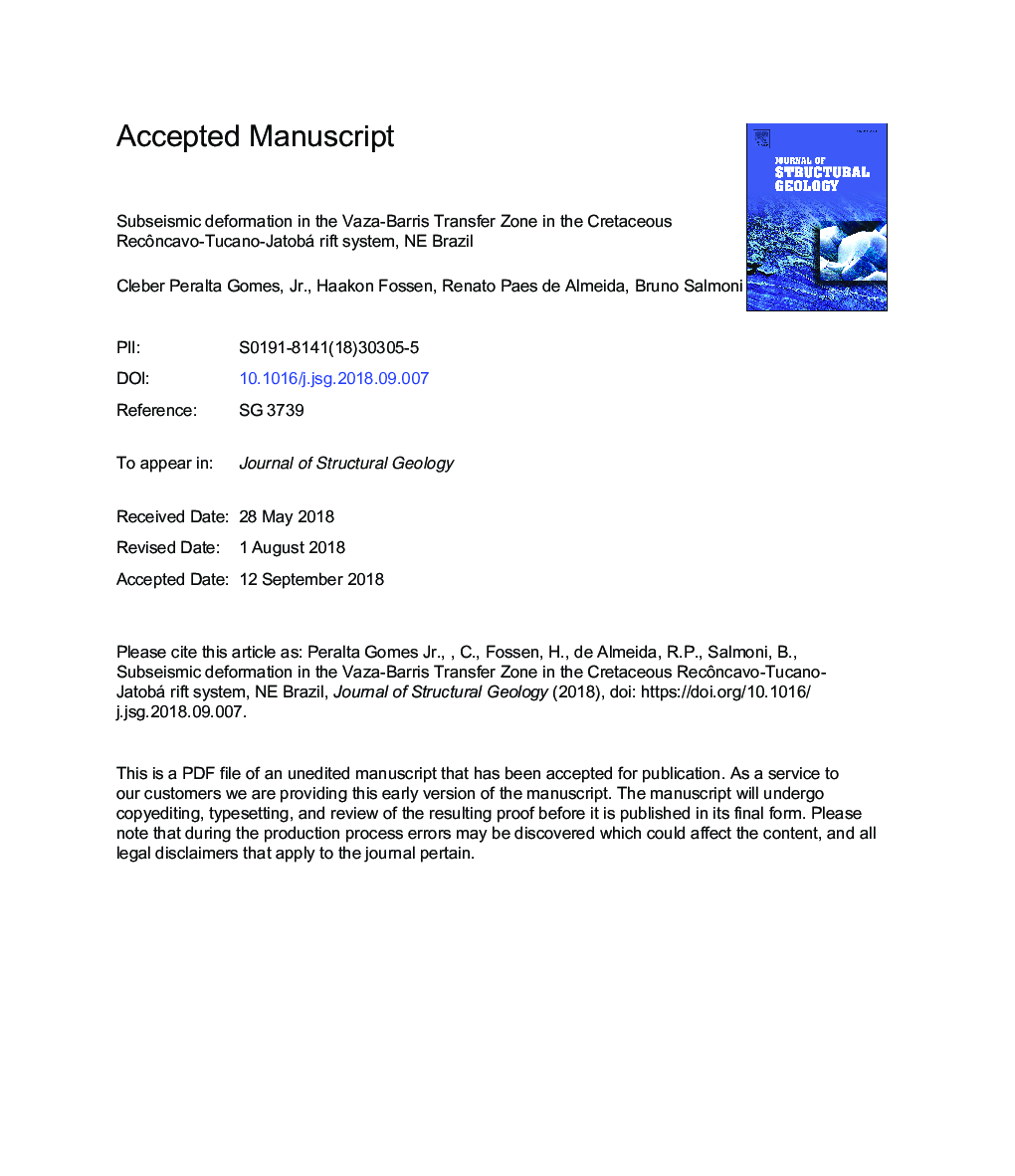| Article ID | Journal | Published Year | Pages | File Type |
|---|---|---|---|---|
| 10224388 | Journal of Structural Geology | 2018 | 49 Pages |
Abstract
We investigate the subseismic structural expression of the major Vaza-Barris Transfer Zone in the Early Cretaceous Tucano rift basin, NE Brazil based on field observations. Subseismic structures in the Tucano rift fill encompass cataclastic deformation bands, deformation band clusters and deformation band faults. In general, these subseismic structures indicate a â¼120° extension direction and document oblique extension across the N-S Tucano Rift, consistent with the movement direction inferred from plate-scale reconstructions. The transfer zone itself is dominated by a large population of NE-SW trending deformation band structures that developed into deformation band faults making a high angle to the transfer zone. The deformation band faults are quite evenly distributed along the transfer zone, which we attribute to extension related to its arcuate cross-sectional shape with flanks dipping toward the rift margins. Additional subordinate structures, many of which are oriented parallel to the transfer zone, show strike-slip dominated motion, and indicate that the finite strain field in the transfer zone involves a component of NNW-SSE shortening in addition to the main extension along the transfer zone. In terms of subseismic fault prediction, however, the evenly distributed zone-perpendicular structures dominate and could impose restrictions on fluid flow along the zone. This macro-permeability anisotropy should be considered in an injection/production scenario in a transfer zone of the type described here. Although other transfer zones may have different geometries and therefore different subseismic characters, an important observation made here is the close correspondence between first-order geometry (in our case an arch-shaped transfer zone) and subseismic deformation (arch extension). In addition, the observation of deformation band faults in the Banzaê Member of the Marizal Formation shows that rifting lasted through the Aptian and possibly into the Albian.
Keywords
Related Topics
Physical Sciences and Engineering
Earth and Planetary Sciences
Geology
Authors
Cleber Jr., Haakon Fossen, Renato Paes de Almeida, Bruno Salmoni,
